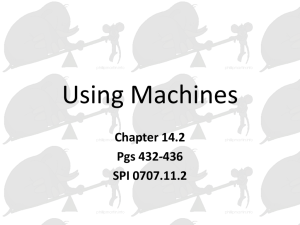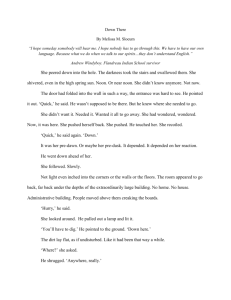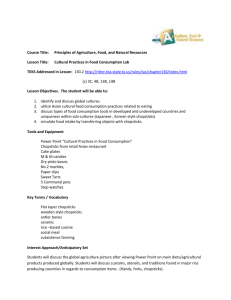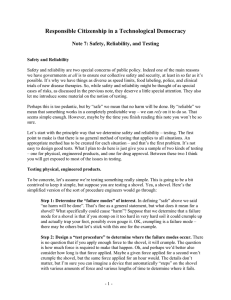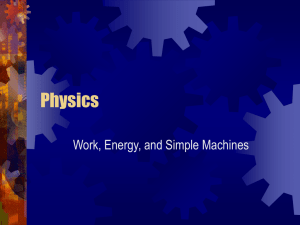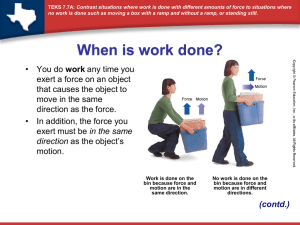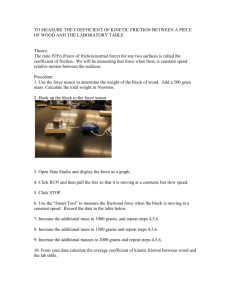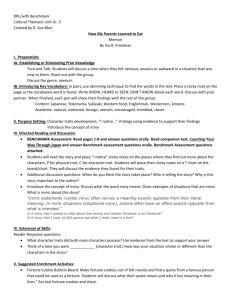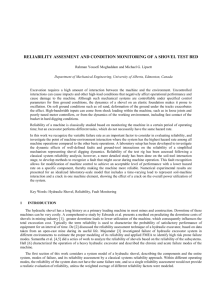How Machines Do Work RT
advertisement
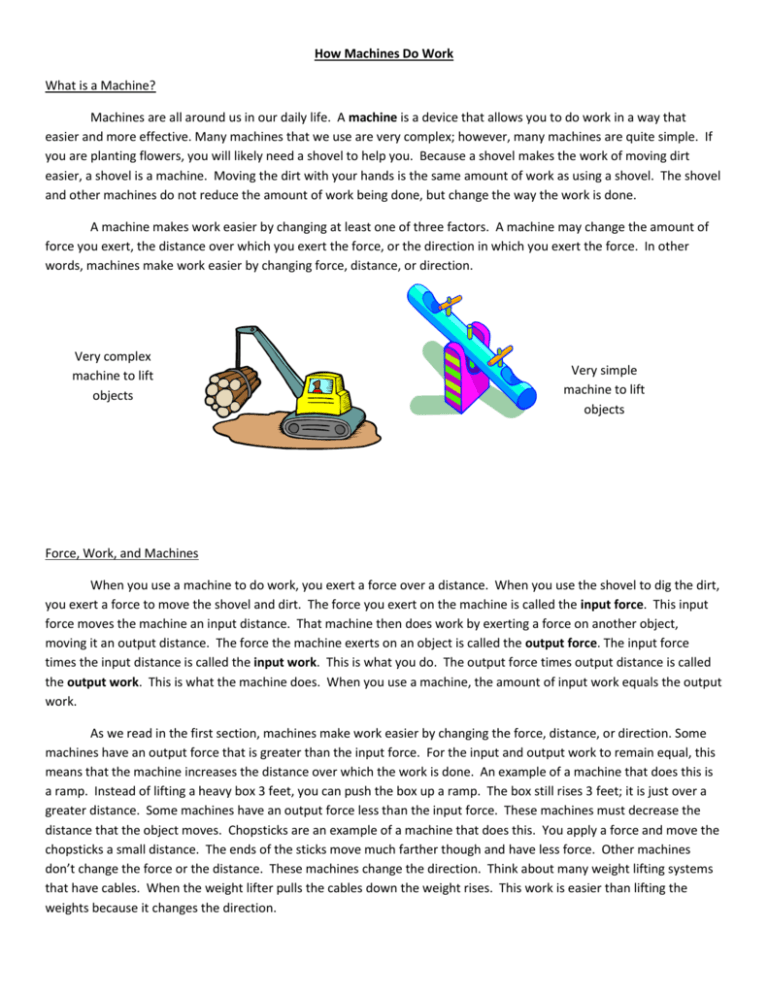
How Machines Do Work What is a Machine? Machines are all around us in our daily life. A machine is a device that allows you to do work in a way that easier and more effective. Many machines that we use are very complex; however, many machines are quite simple. If you are planting flowers, you will likely need a shovel to help you. Because a shovel makes the work of moving dirt easier, a shovel is a machine. Moving the dirt with your hands is the same amount of work as using a shovel. The shovel and other machines do not reduce the amount of work being done, but change the way the work is done. A machine makes work easier by changing at least one of three factors. A machine may change the amount of force you exert, the distance over which you exert the force, or the direction in which you exert the force. In other words, machines make work easier by changing force, distance, or direction. Very complex machine to lift objects Very simple machine to lift objects Force, Work, and Machines When you use a machine to do work, you exert a force over a distance. When you use the shovel to dig the dirt, you exert a force to move the shovel and dirt. The force you exert on the machine is called the input force. This input force moves the machine an input distance. That machine then does work by exerting a force on another object, moving it an output distance. The force the machine exerts on an object is called the output force. The input force times the input distance is called the input work. This is what you do. The output force times output distance is called the output work. This is what the machine does. When you use a machine, the amount of input work equals the output work. As we read in the first section, machines make work easier by changing the force, distance, or direction. Some machines have an output force that is greater than the input force. For the input and output work to remain equal, this means that the machine increases the distance over which the work is done. An example of a machine that does this is a ramp. Instead of lifting a heavy box 3 feet, you can push the box up a ramp. The box still rises 3 feet; it is just over a greater distance. Some machines have an output force less than the input force. These machines must decrease the distance that the object moves. Chopsticks are an example of a machine that does this. You apply a force and move the chopsticks a small distance. The ends of the sticks move much farther though and have less force. Other machines don’t change the force or the distance. These machines change the direction. Think about many weight lifting systems that have cables. When the weight lifter pulls the cables down the weight rises. This work is easier than lifting the weights because it changes the direction. Mechanical Advantage When you compare the input force and the output force, you can find the advantage of using a machine. A machine’s mechanical advantage is the number of times a machine increases a force exerted on it. We will find this using the formula: Mechanical Advantage = Output force ÷ Input force When the output force is greater than the input force, the mechanical advantage of the machine is greater than 1. If you exert 10 newtons of force on a hammer and the hammer exerts 30 newtons of force on a nail, what is the mechanical advantage of the hammer? Mechanical Advantage = Output force ÷ Input force Mechanical Advantage = 30 N ÷ 10 N Mechanical Advantage = 3 When a machine increases distance, the output force is less than the input force. This causes a mechanical advantage less than 1. If you apply 10 newtons of force to chopsticks and the chopsticks exert 5 newtons of force on sushi, what is the mechanical advantage of the chopsticks? Mechanical Advantage = Output force ÷ Input force Mechanical Advantage = 5 ÷ 10 Mechanical Advantage = 0.5 If a machine changes direction, its mechanical advantage will not be greater than or less than 1. The mechanical advantage of these machines is always equal to 1. Efficiency In the second section, you learned that the input work is equal to the output work. This is only true in ideal situations. In the real work, the output work is always less than the input work. In every machine, some work is lost due to friction. The less friction there is the closer the input and output work will be to being the same. The efficiency of a machine compares the input work to the output work. Efficiency is expressed as a percentage. The higher the percentage, the more efficient the machine is. If we know input work and output work, we can find the efficiency. Efficiency= (output work ÷ input work) × 100% I use 20 Joules of work when using scissors to cut paper. The scissors do 12 joules of work on the paper. What is the efficiency of the scissors? Efficiency= (output work ÷ input work) × 100% Efficiency= (12 ÷ 20) × 100% Efficiency= (0.6) × 100% Efficiency= 60% If you could find a machine that had an efficiency of 100%, it would be an ideal machine. Unfortunately, no ideal machines exist. In all machines, some work is always lost due to friction. This means all machines have an efficiency less than 100%.

